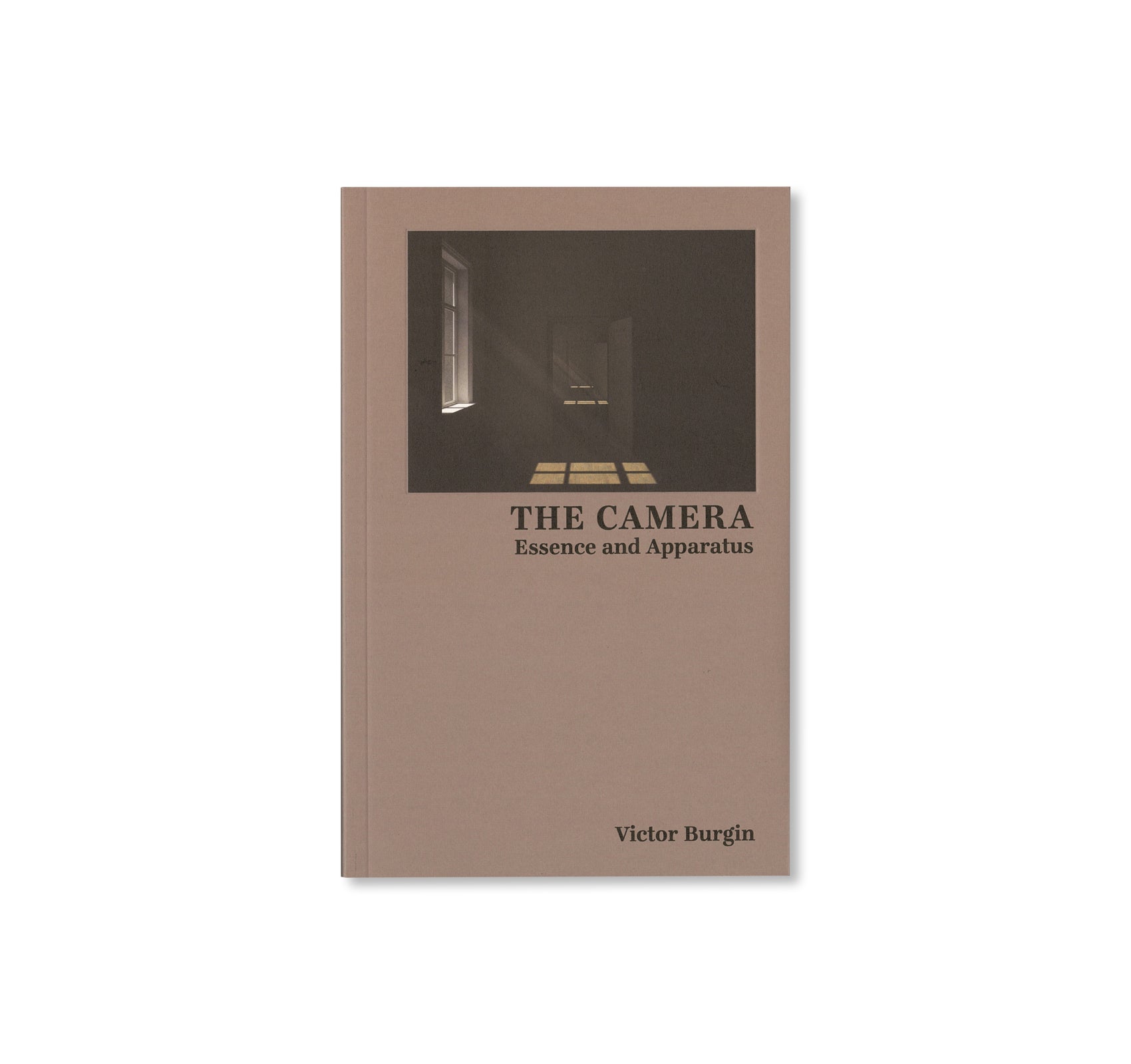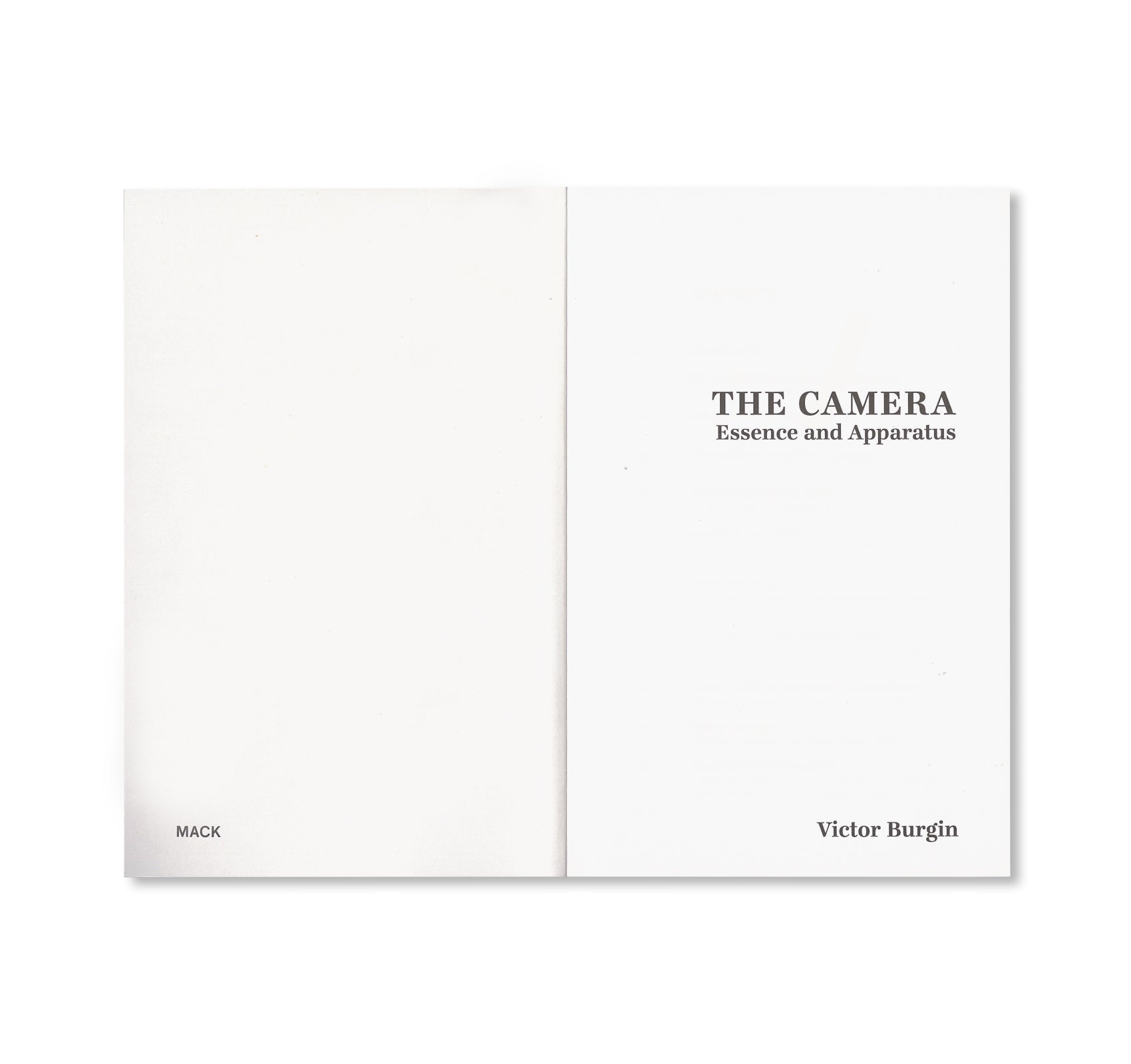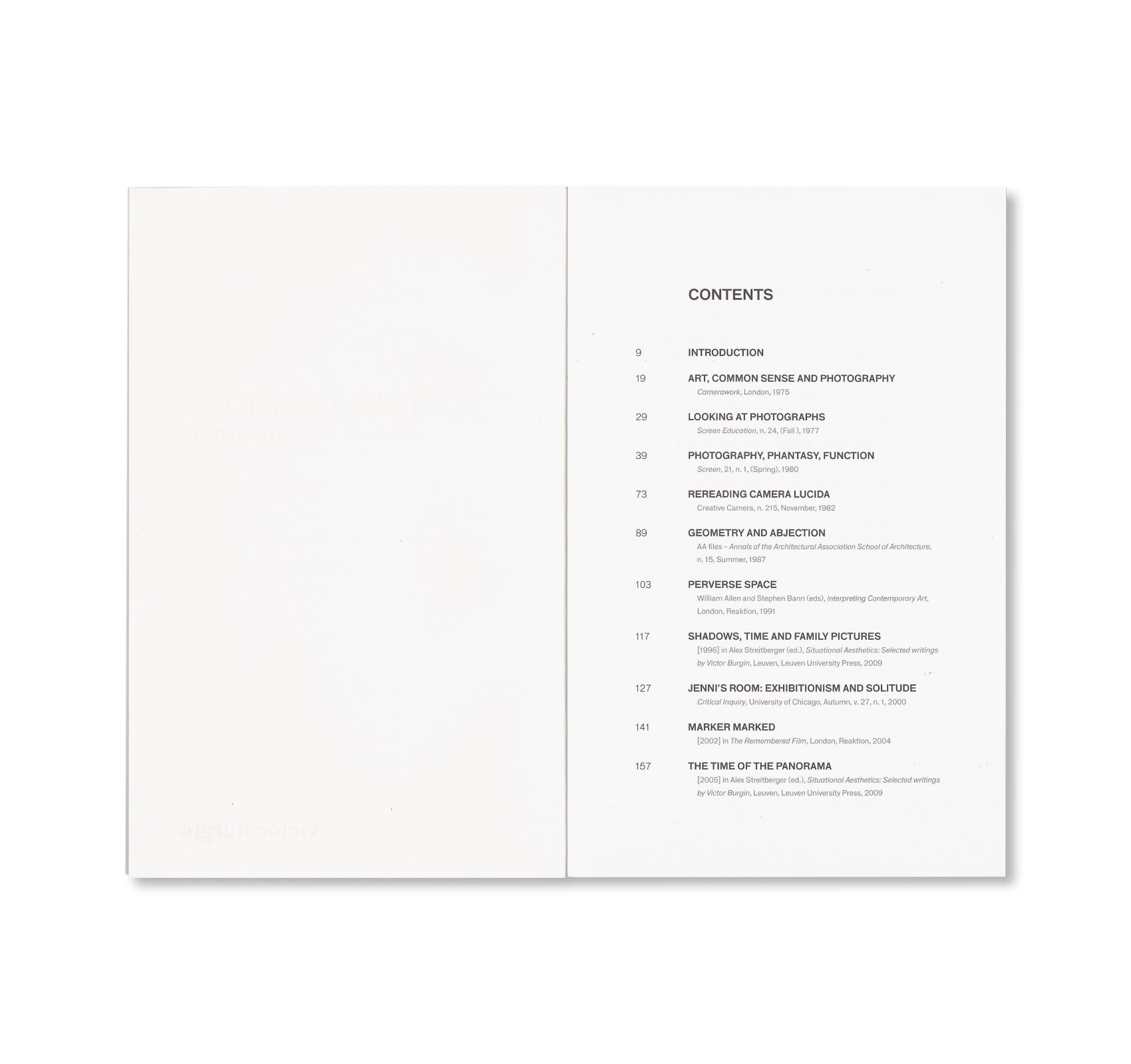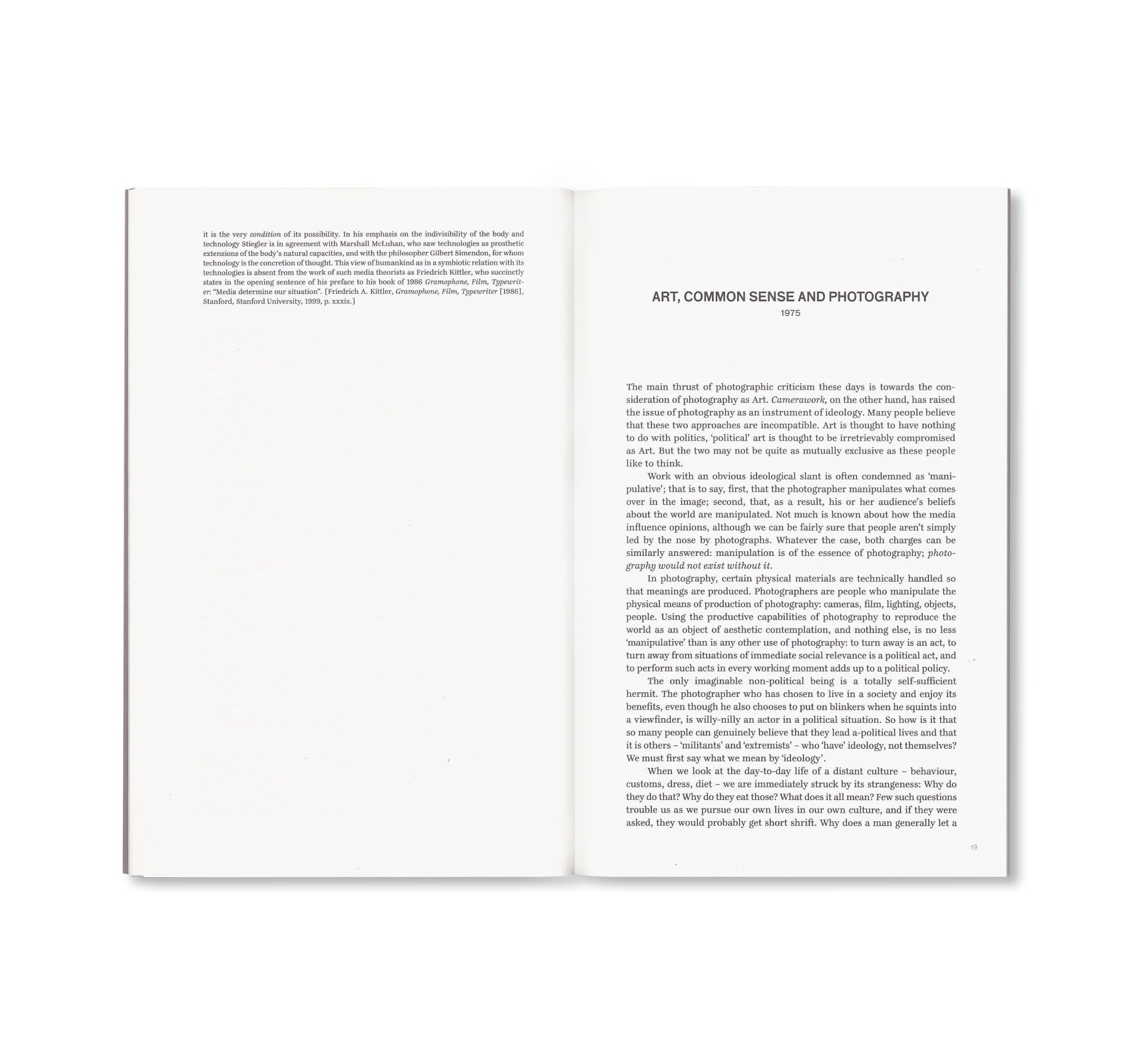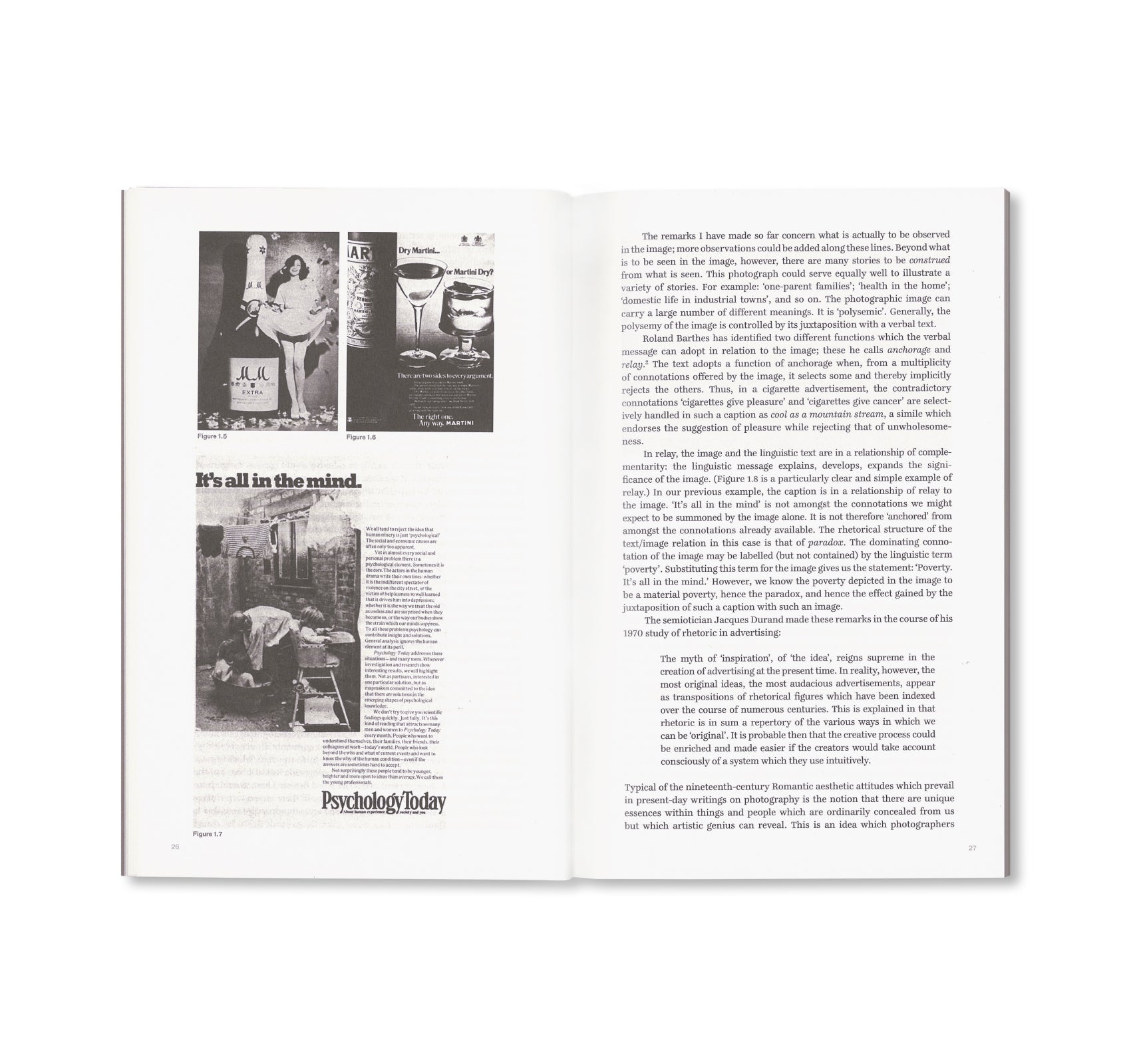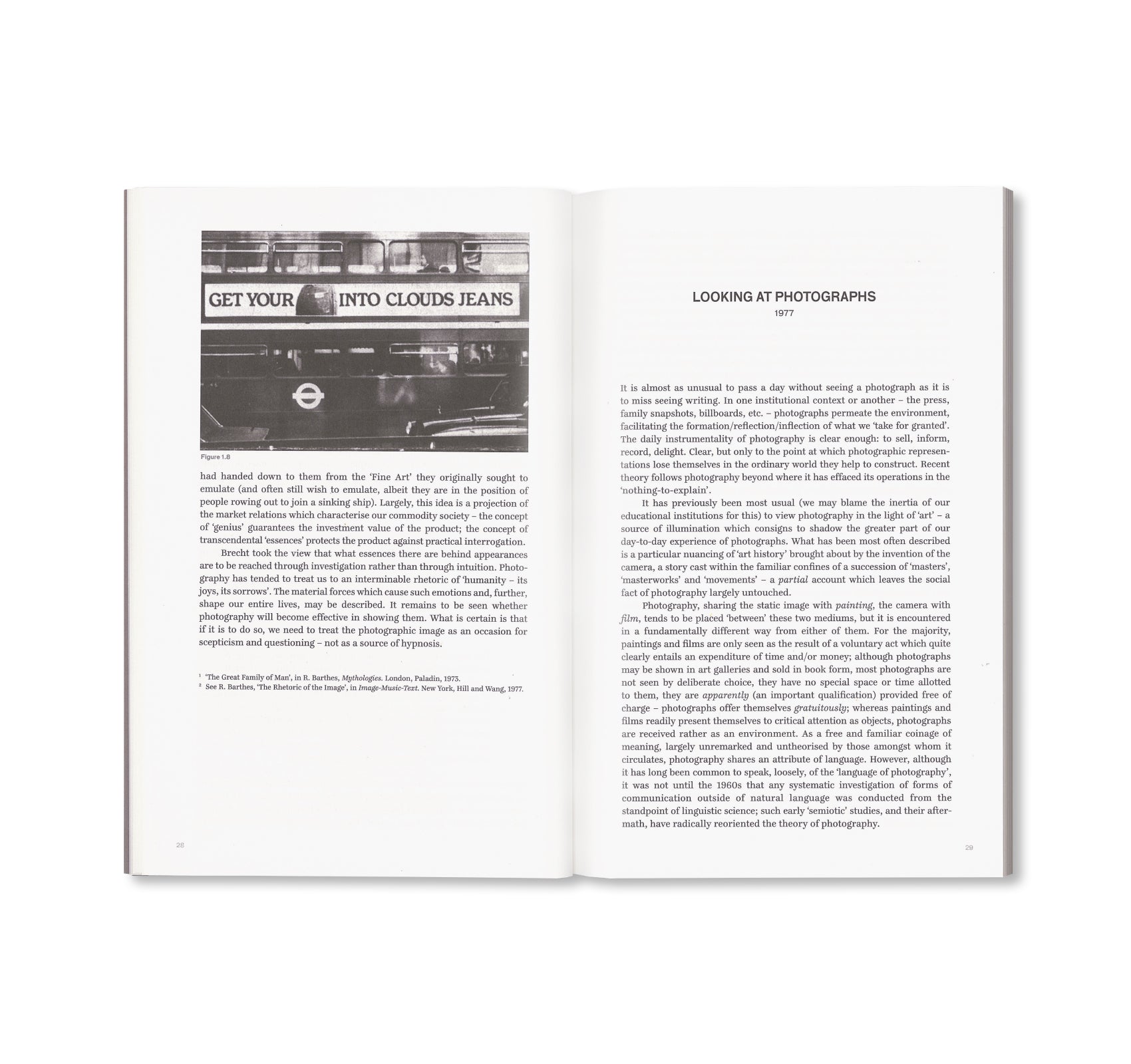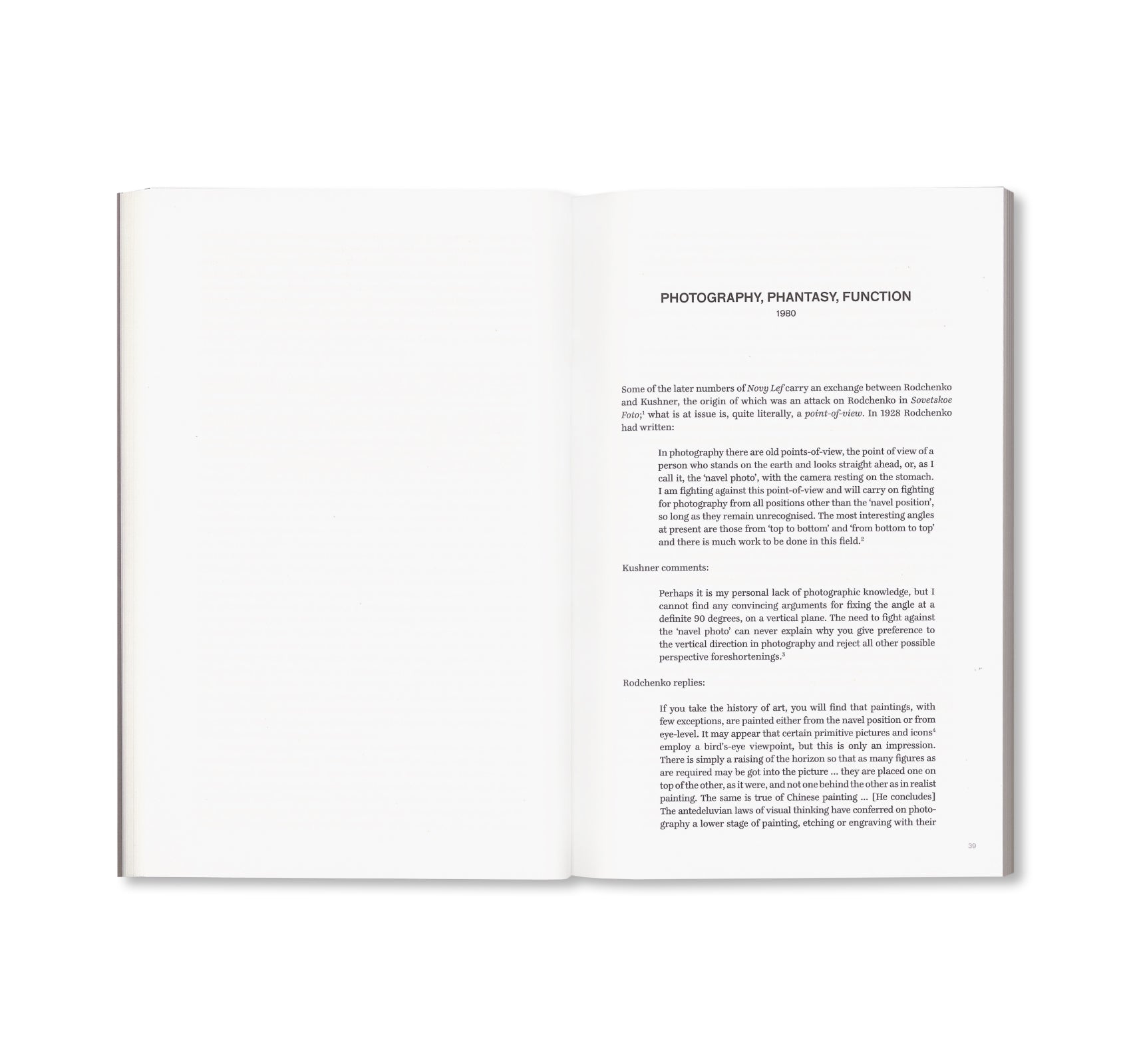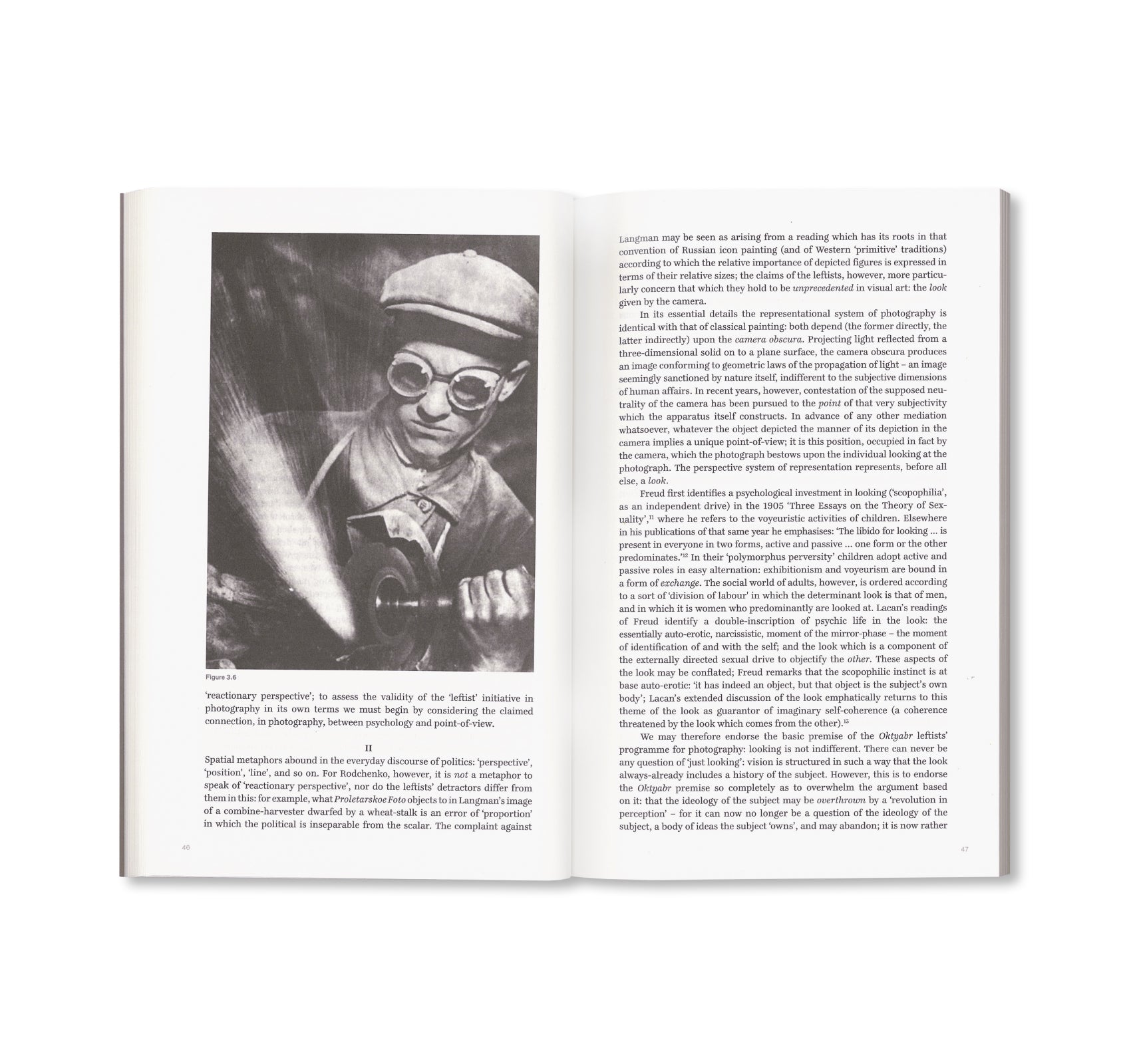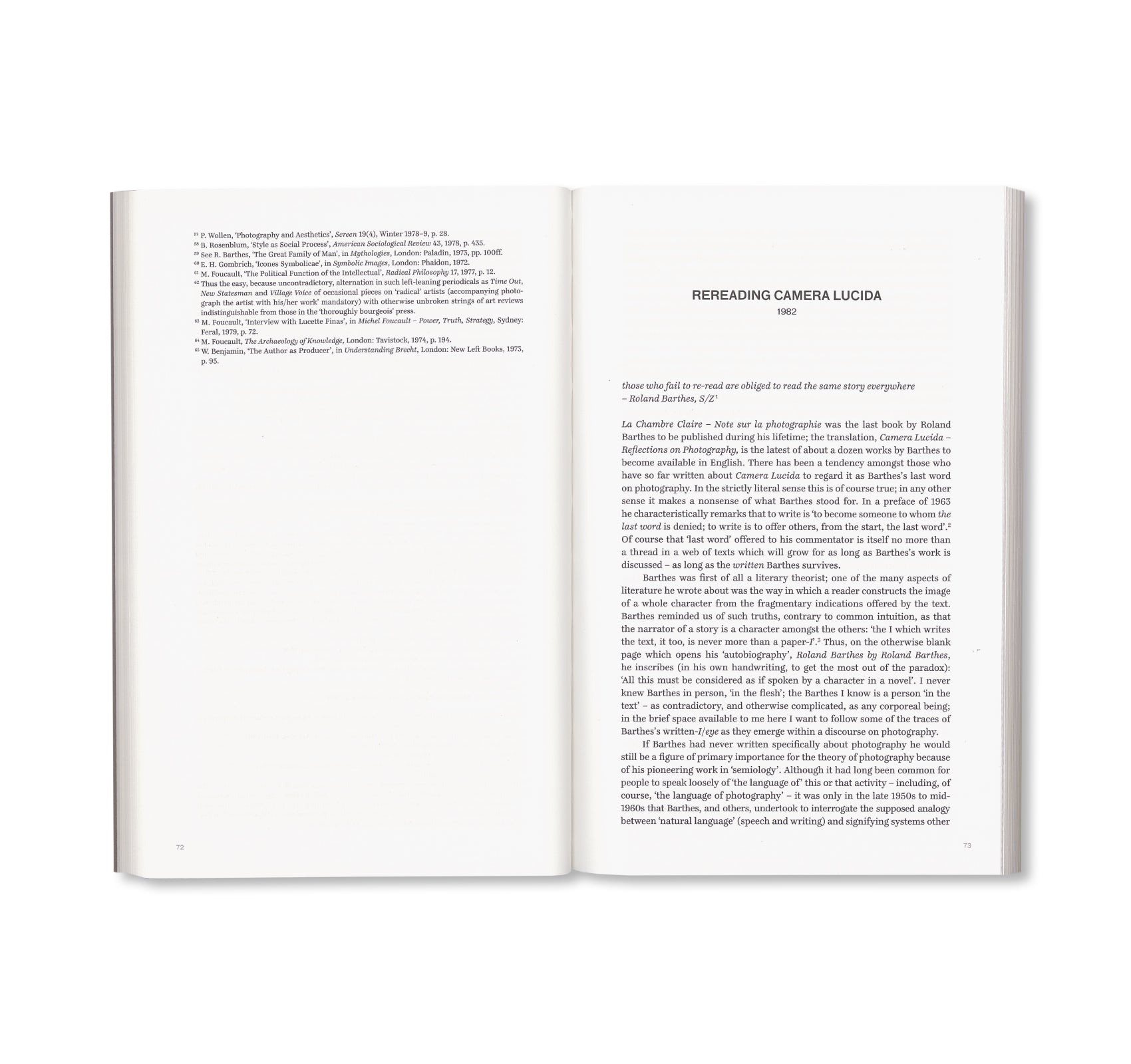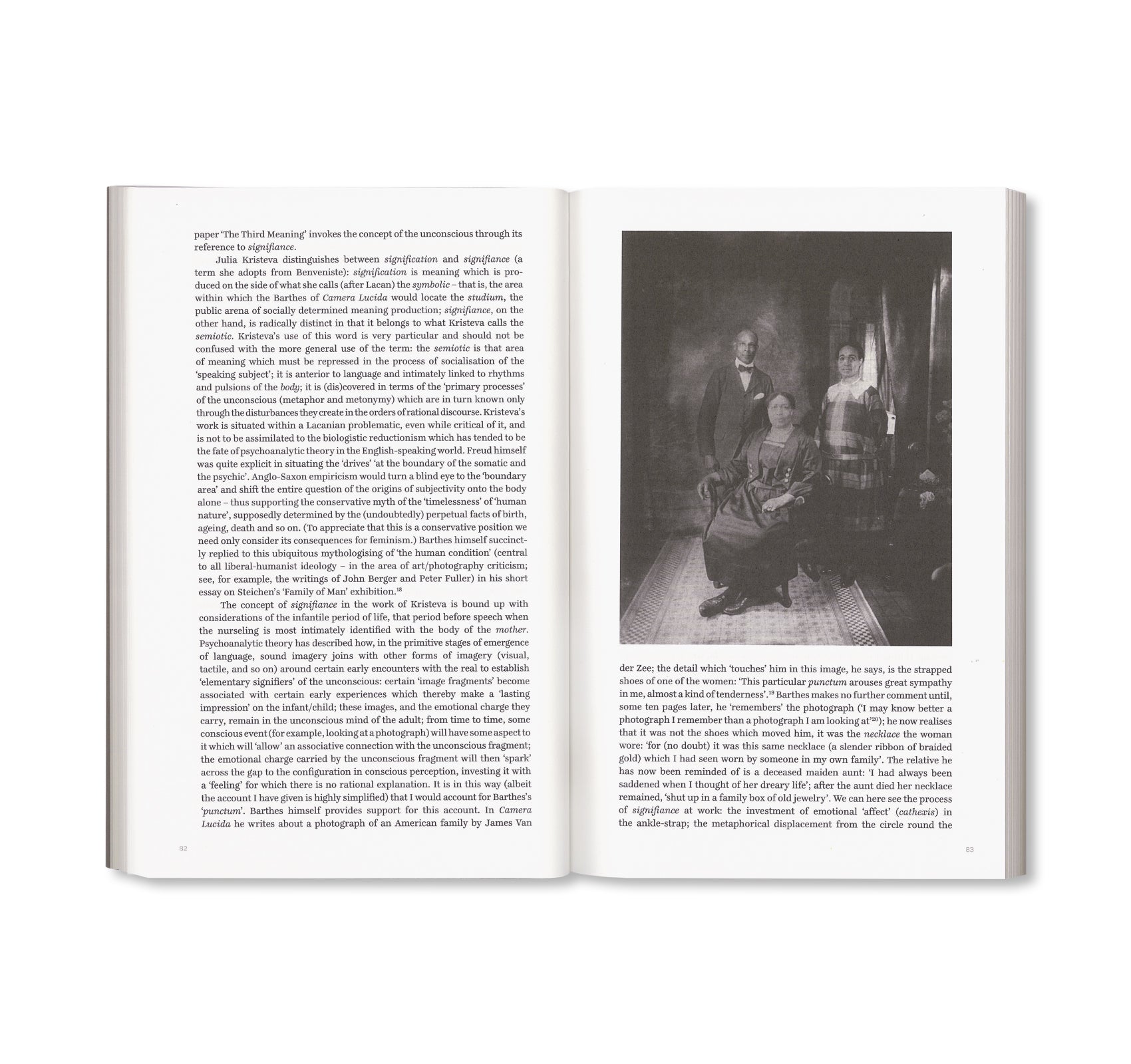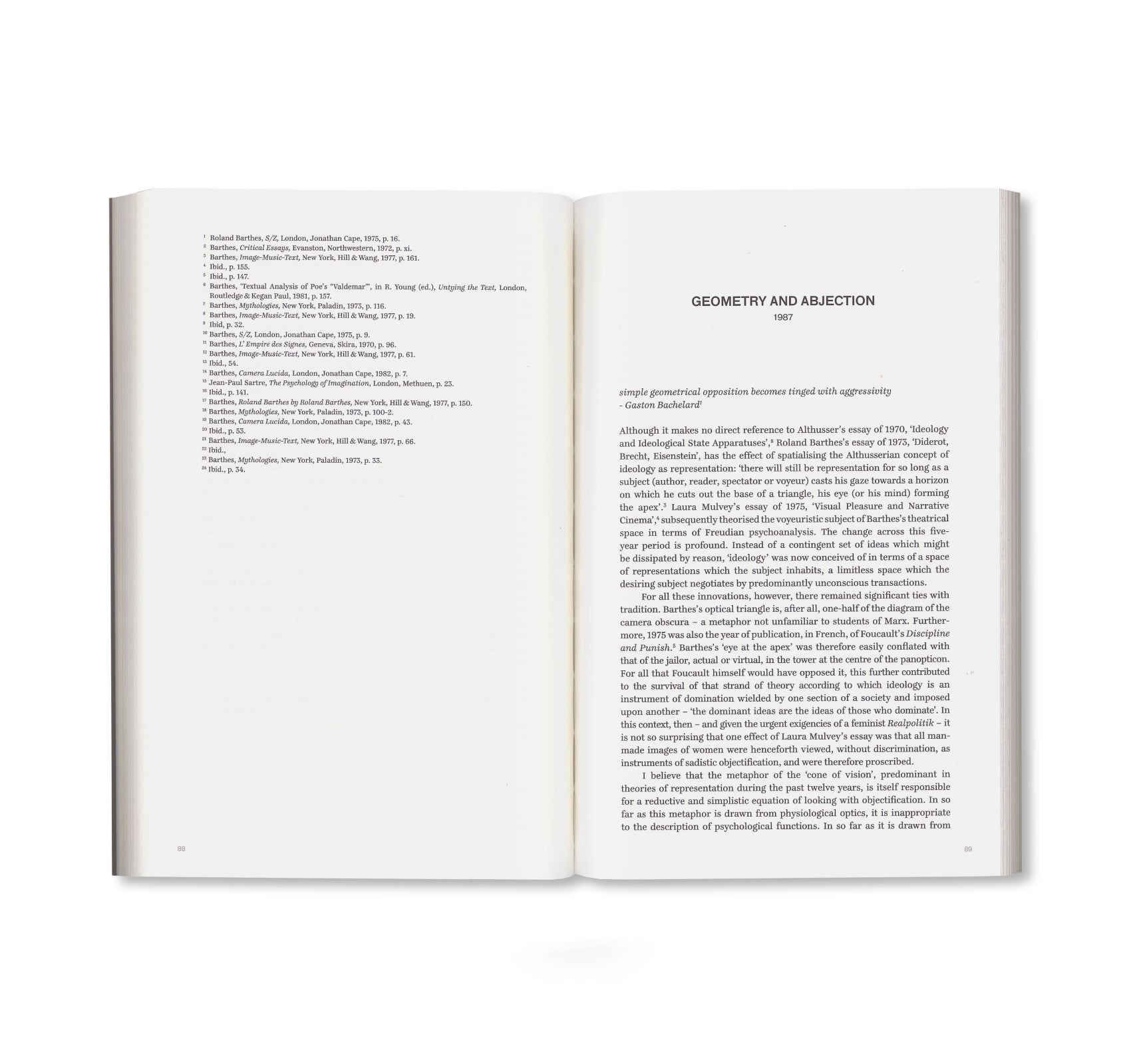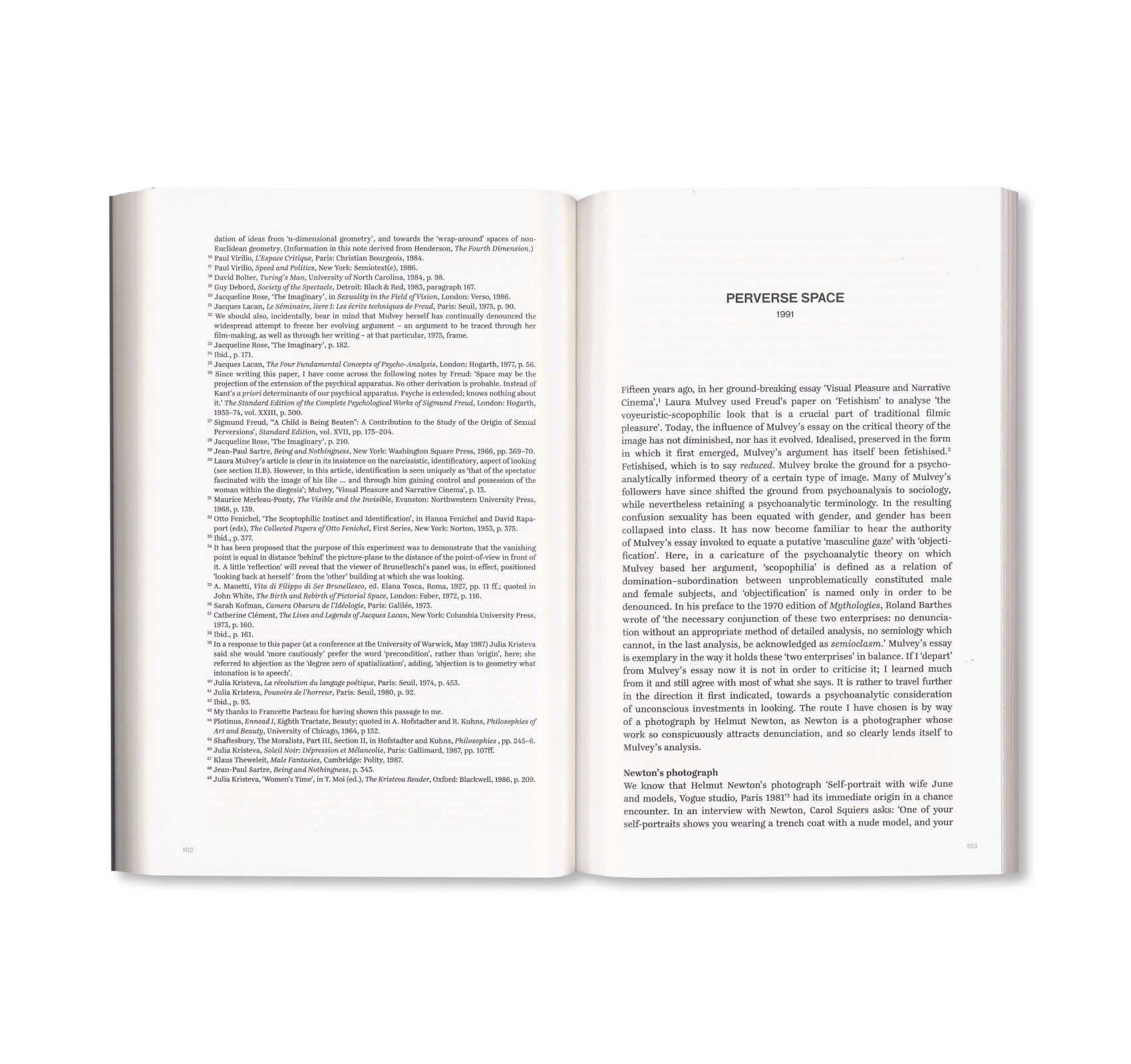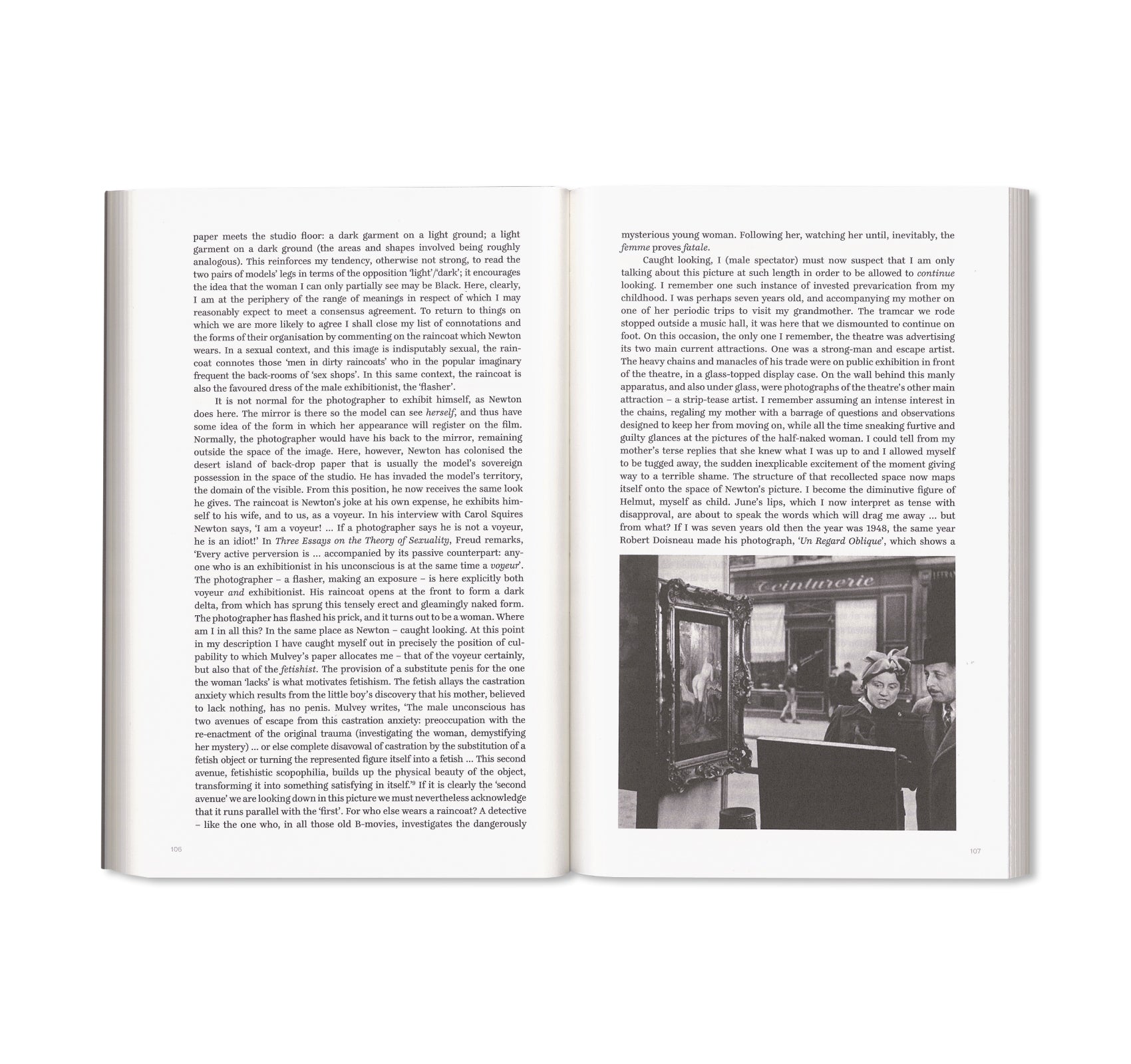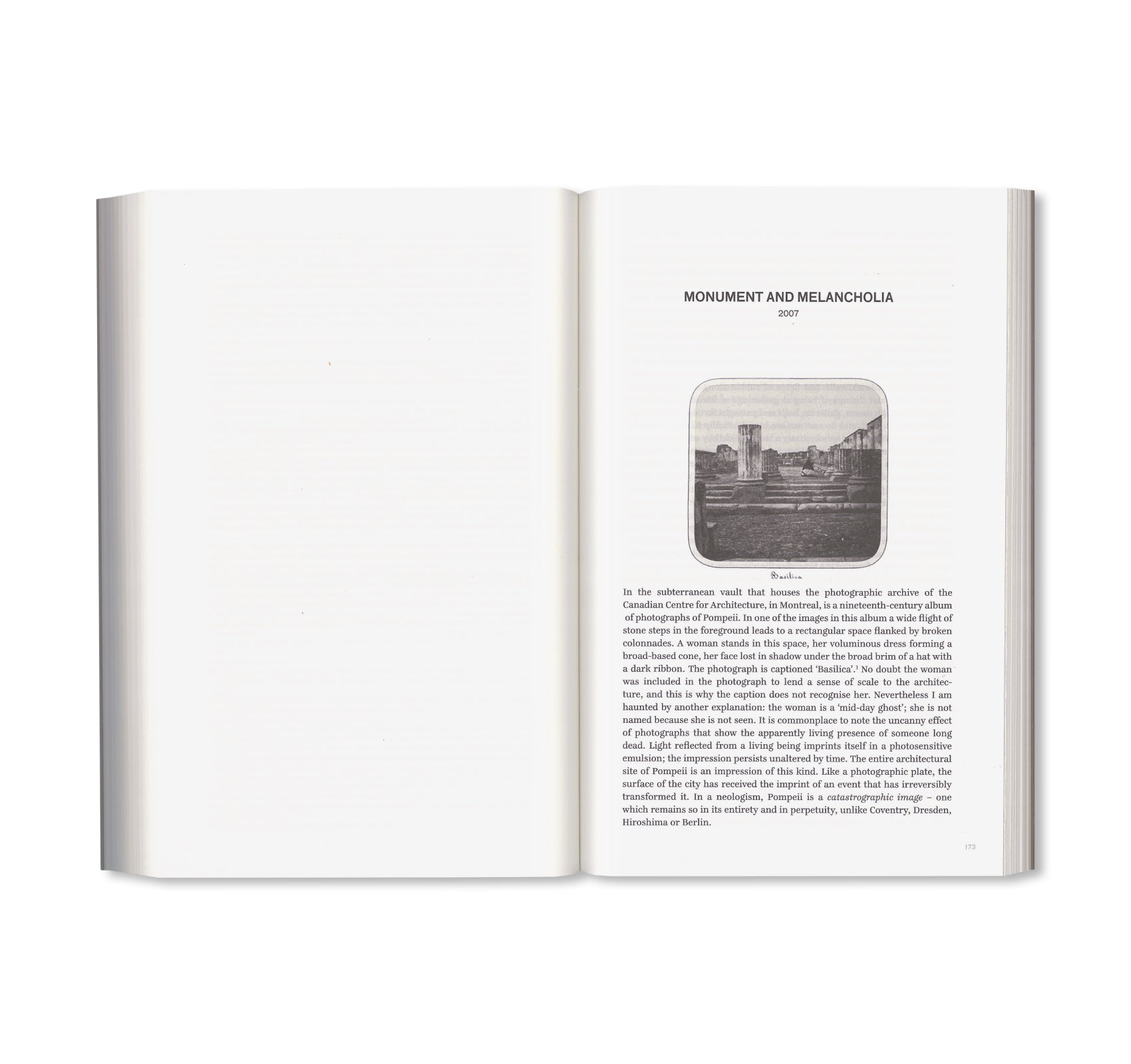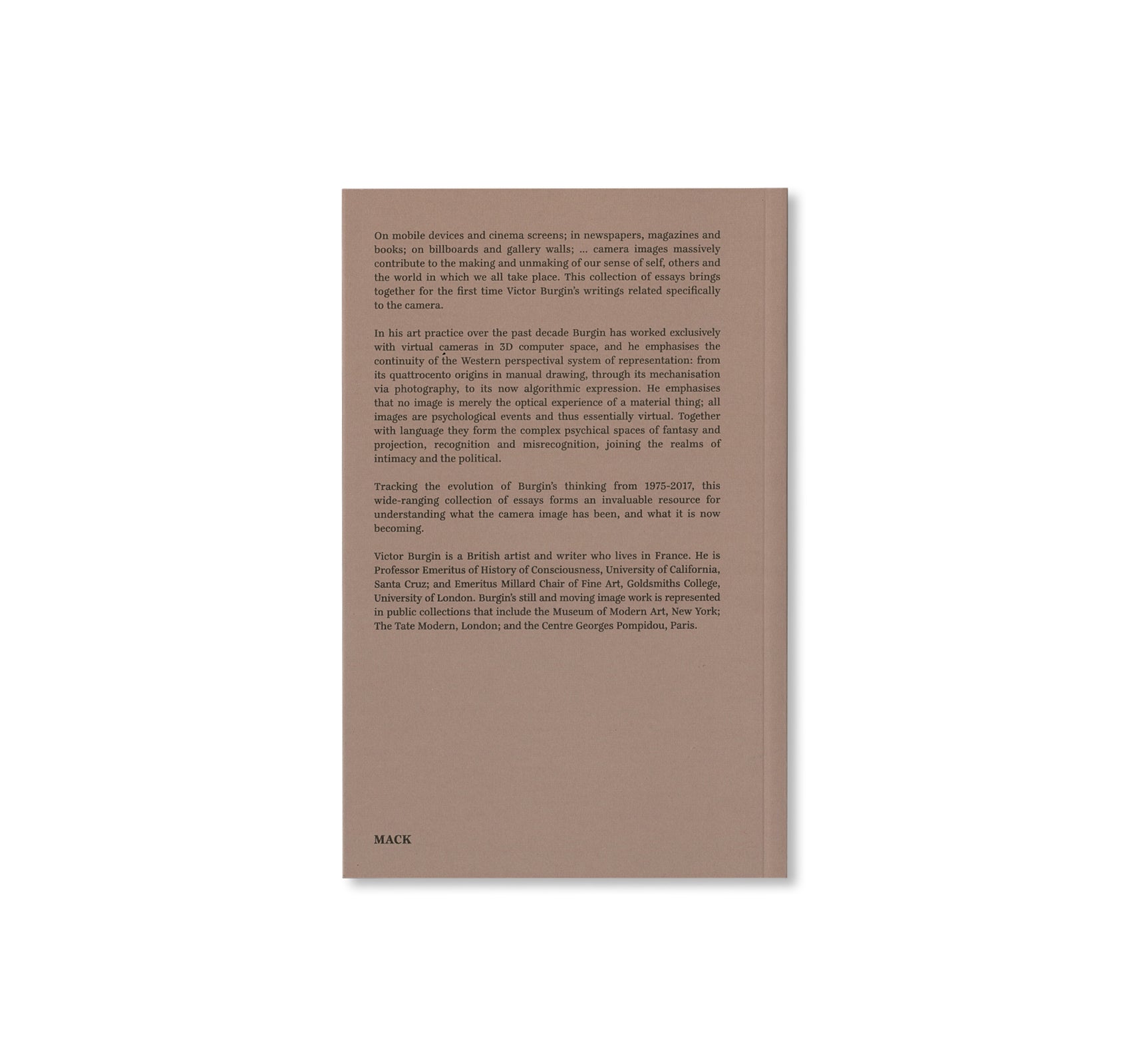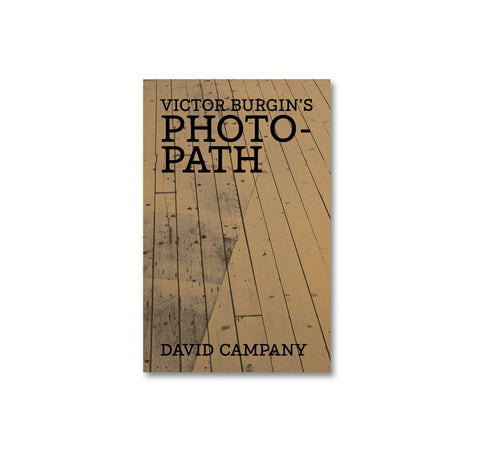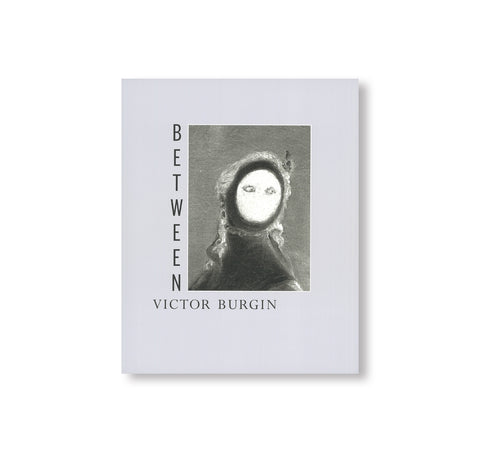THE CAMERA: ESSENCE AND APPARATUS by Victor Burgin
イギリス人アーティストであり作家のヴィクター・バーギン(Victor Burgin)によるエッセイ集。存命するアーティスト、ライターの中で最も影響力ある人物の一人と謳われ、1960年代後半にはコンセプチュアルアートの分野において重要な存在として注目を集めた。創作活動の関心を写真分野に移してからは、革新的かつ理論的なエッセイのシリーズ制作を手がけてきた。意思と価値の産出において、また記憶や歴史、主観性、空間を理解する際において、写真が持つイデオロギー的な役割を検討すべく、記号論や精神分析学、フェミニズムに基づき著している。過去10年ほどの間、作者はCG処理された画像とバーチャルカメラを用いてきた。しかし、いわゆる「アナログ」と「デジタル」との領域間を抜本的に分離させることを受け入れるのではなく、むしろバーチャルカメラや、昨今多く利用されているバリエーション豊かなカメラ、そしてルネッサンス期の絵画を取り上げ、それらのイメージの連続性を強調してきた。この3つは全て透視図法に基づいた表現においてそれぞれ本質をついている。さらに作者は、イメージは単純な光学的経験でなく本来心理的事象であり、故に仮想的でもあると主張しており、言語とは切っても切り離せず、幻想と投影、認識と誤認識における精神的な空間を形作っている。ページの中でも、はたまた壁やスクリーン上でも、またギャラリーでもオンライン上でも、更には一枚の写真でも複数枚の集合体であろうとも、イメージとは我々の自意識を形作ること、かつ壊すことであり、我々を取り巻く世界なのだ。本作は、バーギンが著した中でも、カメラに関する作品を中心に初めて編纂された一冊であり、50年以上にも渡り考察されてきたバーギンの思考の機微や変化に触れることができる作品集である。さらに言えば、カメラがどのようなものであったか、そして今どうあるか、そしてその影響がどのように理解されているか、その進化を我々が図式化できるよう導いてくれる。
Victor Burgin is one of the most influential artists and writers working today. He came to prominence as a key figure in the Conceptual Art of the late 1960s. After turning to photography in his artistic practice he produced a series of groundbreaking theoretical essays that drew on semiotics, psychoanalysis and feminism in order to think through the ideological role of photographs in the production of beliefs and values, and in the understanding of memory, history, subjectivity and space. In the last decade or so, Burgin has worked with computer-generated imagery and the virtual camera. But rather than accepting a radical divide between so-called ‘analogue’ and ‘digital’ realms, Burgin has emphasised the continuity of the virtual camera, the various physical cameras in use today, and the painted images of Quattrocento painting – all of which have their essence in the perspectival system of representation. Further to this, Burgin argues that no image is merely an optical experience – all images are essentially psychological events and thus virtual also. Inseparable from language, they form the psychical spaces of fantasy and projection, recognition and misrecognition. Whether on pages, walls or screens, in galleries or online, single views, or swarms of picture fragments, images are the making and unmaking of our sense of self, and the world around us. This collection brings together for the first time Victor Burgin’s writings related specifically to the camera, following the shifts and nuances in his thinking over nearly five decades. Moreover, it allows us to chart the evolution of what the camera was and is, and how its affects are to be understood.
